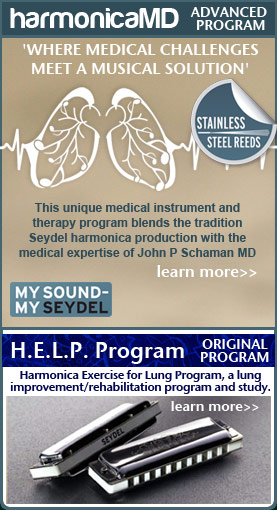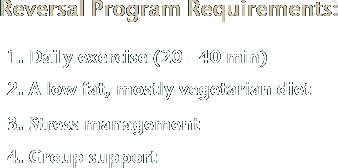


Coronary heart disease is the number one health problem in North America today and is more common than all other diseases in the modem world put together. This disease is known to be progressive, starting before we enter our teenage years and progressing gradually over a long period of time, until an artery is sufficiently blocked to eventually cause a problem. When someone first develops a sign or symptom of heart disease it is only the tip of the iceberg, and like the iceberg, most of the disease is hidden below the surface. Cardiac rehabilitation programs, like the one operating under the umbrella of the Cardiac Fitness Association, have stressed the importance of risk factor modification. By changing risk factors, it has been proven that the often rapidly progressing atherosclerotic process can be stopped, or at least slowed down and even potentially reversed. Major changeable risk factors include: smoking, high blood levels of fats (cholesterol, triglycerides), high blood pressure, diabetes, stress, obesity, and lack of regular exercise.
In recent years, there has been a tendency for the medical community, as well as patients, to rely on the high technology options such as bypass surgery, balloon angioplasty, and new powerful drugs. These methods are not without risk and side effects. The warranty period for these procedures is not nearly as long as doctors and patients expect and would hope for. On average, bypassed arteries re-block in 5 to 10 years and it is known that the bypassed vessels block more rapidly than do the native arteries. Balloon angioplasties, prior to the use of stents, have been shown to fail in 40 to 60% of patients 4 to 6 months after the procedure. The very effective and powerful drugs that control cholesterol can be toxic to the body and many of these drugs require periodic blood tests to assess what damage may have occurred to the liver. Patients who take these must realize that these drugs must be taken for life, because when the drug is discontinued the beneficial effect on cholesterol is promptly lost. Despite these modern advances in medicine it is a mistake to subsequently ignore the lifestyle factors that must be changed. Patients undergoing bypass surgery or balloon angioplasty must realize that the cause of their disease has not been affected by their surgical or medical procedure and unless they make drastic dietary and lifestyle changes the disease will very quickly resurface.
In November 1989, a landmark scientific study was reported and this study revealed that the dietary approach that had been long recommended by the heart associations and various medical and nutritional experts was not sufficient to arrest the atherosclerotic process. This same result had been found over the preceding few years at our cardiac rehabilitation program in Breslau. We had found that patients following the usually recommended heart diet (less beef and pork, more chicken and fish, chicken without the skin, less egg yolk, less saturated fat, etc.) very often had progression of their disease despite doing all the 'right things'. The same scientific study however did reveal that a stricter dietary approach, in conjunction with other methods including an aggressive exercise program, a stress management program, and group support, did result in not only arresting the atherosclerotic process but actually in reversing it.
Reversal Program requirements:
1. Daily xercize (20 - 40 min)
2. A low fat, mostly vegetarian diet
3. Stress management
4. Group support
The reversal diet is a very strict diet by normal standards. It does provide the body’s entire requirement for protein, nutrients, minerals, and carbohydrate. It reduces the excessive fat and cholesterol that is known to lead to atherosclerotic heart disease. All animal products are excluded except for egg whites and 1 1/2 cups of nonfat dairy product (for example skim milk or nonfat yogurt). The egg white provides considerable protein but does not add the high cholesterol content of the yolk. Egg yolk is one of the richest sources of cholesterol and contains between 250 and 300 mg of cholesterol, depending on the size of the egg. The normal Canadian diet consists of 40 to 45% of calories coming from fat and the reversal diet reduces this to only 10% of calories coming from fat. This supplies more fat than is required by the body.
Carbohydrate is provided primarily in the complex form (starches). Cholesterol is reduced to only 40 to 50 mg per day from the usual Canadian level of 500 to 700 mg per day. Salt is not restricted except in patients who have high blood pressure, heart failure, or kidney disease. Otherwise, salt can be used in moderation. Alcohol consumption is not encouraged, however it is not denied. The rule of alcohol intake that we have recommended for over twenty years is unchanged: do not drink more than two alcoholic drinks per day, not every day, and you can't save them up. Caffeine containing beverages are not recommended due to the aggravating effect that caffeine has on heart irregularities and also the effect that caffeine has on the "stress response" and on cholesterol. Calories are not restricted within reasonable guidelines. Because this diet is very low in fat, total calorie intake is generally lowered because 1 gram of fat provides 9 calories whereas 1 gram of carbohydrate and protein provides only 4 calories. It is therefore obvious that by decreasing fat intake, total calorie intake will be reduced.
Many medical experts maintain that a diet without meat will be deficient in protein. This is simply not the case. The studies looking at vegetarian diets, that I have reviewed, all have concluded that vegetarians are generally healthier than meat eaters. It is necessary however, that vegetarians have adequate protein combinations. Some essential amino acids (building blocks of protein) are derived from legumes (e.g. beans) and others are derived from grains (e.g. rice). In order to have a complete protein meal, grains and legumes should be part of the daily meal plan. To facilitate this, the Cardiac Fitness Association Cookbook lists main course dishes in categories, clearly indicating the grain and legume components.
Heart Disease is a disease of choice. You decide what you eat; you decide whether you smoke; you decide how much exercise you get; you decide the lifestyle you follow. Good luck in making your decision.
John P. Schaman M.D.
In recent years, there has been a tendency for the medical community, as well as patients, to rely on the high technology options such as bypass surgery, balloon angioplasty, and new powerful drugs. These methods are not without risk and side effects. The warranty period for these procedures is not nearly as long as doctors and patients expect and would hope for. On average, bypassed arteries re-block in 5 to 10 years and it is known that the bypassed vessels block more rapidly than do the native arteries. Balloon angioplasties, prior to the use of stents, have been shown to fail in 40 to 60% of patients 4 to 6 months after the procedure. The very effective and powerful drugs that control cholesterol can be toxic to the body and many of these drugs require periodic blood tests to assess what damage may have occurred to the liver. Patients who take these must realize that these drugs must be taken for life, because when the drug is discontinued the beneficial effect on cholesterol is promptly lost. Despite these modern advances in medicine it is a mistake to subsequently ignore the lifestyle factors that must be changed. Patients undergoing bypass surgery or balloon angioplasty must realize that the cause of their disease has not been affected by their surgical or medical procedure and unless they make drastic dietary and lifestyle changes the disease will very quickly resurface.
In November 1989, a landmark scientific study was reported and this study revealed that the dietary approach that had been long recommended by the heart associations and various medical and nutritional experts was not sufficient to arrest the atherosclerotic process. This same result had been found over the preceding few years at our cardiac rehabilitation program in Breslau. We had found that patients following the usually recommended heart diet (less beef and pork, more chicken and fish, chicken without the skin, less egg yolk, less saturated fat, etc.) very often had progression of their disease despite doing all the 'right things'. The same scientific study however did reveal that a stricter dietary approach, in conjunction with other methods including an aggressive exercise program, a stress management program, and group support, did result in not only arresting the atherosclerotic process but actually in reversing it.
Reversal Program requirements:
1. Daily xercize (20 - 40 min)
2. A low fat, mostly vegetarian diet
3. Stress management
4. Group support
The reversal diet is a very strict diet by normal standards. It does provide the body’s entire requirement for protein, nutrients, minerals, and carbohydrate. It reduces the excessive fat and cholesterol that is known to lead to atherosclerotic heart disease. All animal products are excluded except for egg whites and 1 1/2 cups of nonfat dairy product (for example skim milk or nonfat yogurt). The egg white provides considerable protein but does not add the high cholesterol content of the yolk. Egg yolk is one of the richest sources of cholesterol and contains between 250 and 300 mg of cholesterol, depending on the size of the egg. The normal Canadian diet consists of 40 to 45% of calories coming from fat and the reversal diet reduces this to only 10% of calories coming from fat. This supplies more fat than is required by the body.
Carbohydrate is provided primarily in the complex form (starches). Cholesterol is reduced to only 40 to 50 mg per day from the usual Canadian level of 500 to 700 mg per day. Salt is not restricted except in patients who have high blood pressure, heart failure, or kidney disease. Otherwise, salt can be used in moderation. Alcohol consumption is not encouraged, however it is not denied. The rule of alcohol intake that we have recommended for over twenty years is unchanged: do not drink more than two alcoholic drinks per day, not every day, and you can't save them up. Caffeine containing beverages are not recommended due to the aggravating effect that caffeine has on heart irregularities and also the effect that caffeine has on the "stress response" and on cholesterol. Calories are not restricted within reasonable guidelines. Because this diet is very low in fat, total calorie intake is generally lowered because 1 gram of fat provides 9 calories whereas 1 gram of carbohydrate and protein provides only 4 calories. It is therefore obvious that by decreasing fat intake, total calorie intake will be reduced.
Many medical experts maintain that a diet without meat will be deficient in protein. This is simply not the case. The studies looking at vegetarian diets, that I have reviewed, all have concluded that vegetarians are generally healthier than meat eaters. It is necessary however, that vegetarians have adequate protein combinations. Some essential amino acids (building blocks of protein) are derived from legumes (e.g. beans) and others are derived from grains (e.g. rice). In order to have a complete protein meal, grains and legumes should be part of the daily meal plan. To facilitate this, the Cardiac Fitness Association Cookbook lists main course dishes in categories, clearly indicating the grain and legume components.
Heart Disease is a disease of choice. You decide what you eat; you decide whether you smoke; you decide how much exercise you get; you decide the lifestyle you follow. Good luck in making your decision.
John P. Schaman M.D.





